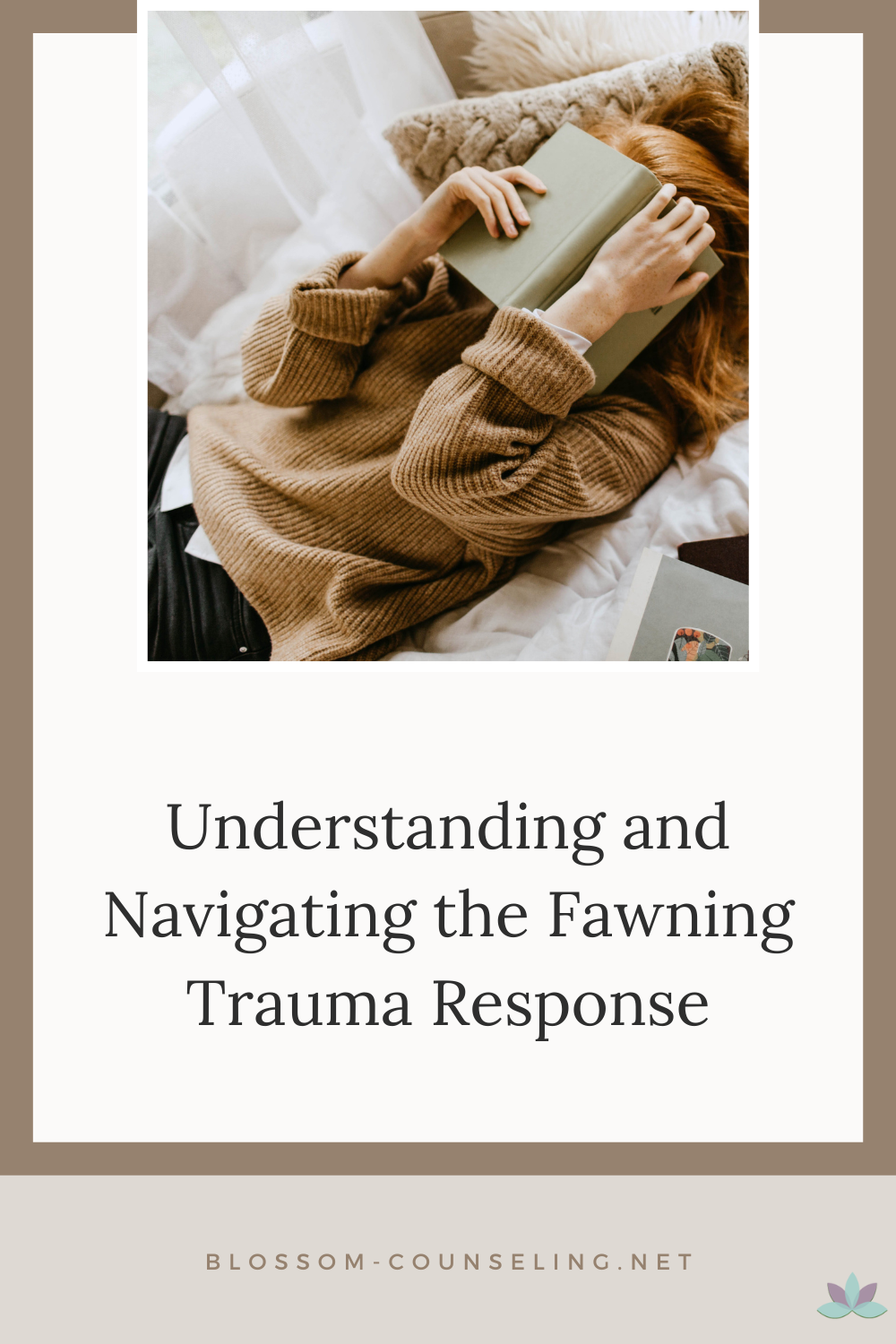
Let’s have an open conversation about the fawning trauma response. If you’re unfamiliar with this term, don’t worry—we’re here to explore what it means and offer some insights on how to navigate it. So, grab a cup of tea, find a cozy spot, and let’s dive into this topic together.
Understanding the Fawning Trauma Response:
When we talk about trauma responses, we often think of fight, flight, or freeze. However, there’s another response that deserves attention: fawning. Fawning is a coping mechanism that individuals may develop as a result of past trauma. It involves excessively pleasing others, accommodating their needs at the expense of one’s own, and suppressing personal boundaries. It’s a survival strategy rooted in the desire to avoid conflict or harm.
Recognizing the Fawning Response:
Identifying the fawning response can be challenging because it often disguises itself as “being nice” or “being helpful.” However, there are some signs that may indicate you lean towards the fawning response:
1. Over-accommodating: You find yourself constantly prioritizing other people’s needs and desires, even if it means sacrificing your own.
2. Difficulty setting boundaries: Establishing and asserting your personal boundaries can feel uncomfortable or even impossible, as you fear displeasing others or being rejected.
3. People-pleasing tendencies: You often go to great lengths to gain approval, acceptance, or validation from others, even if it means compromising your own values or well-being.
4. Suppressing emotions: You may find it challenging to express your true feelings, opting instead to maintain harmony and avoid conflict.
5. Self-neglect: Taking care of yourself and prioritizing your own needs can feel foreign or selfish, as your focus is primarily on meeting the needs of others.
Navigating the Fawning Response:
It’s important to remember that healing from trauma is a complex and personal journey. While professional support is highly recommended, here are a few suggestions to help navigate the fawning response:
1. Cultivate self-awareness: Take the time to reflect on your behavior, emotions, and thought patterns. Recognize the moments when you tend to engage in fawning tendencies, and explore the underlying reasons behind them.
2. Validate your experiences: Understand that your past experiences have shaped your responses. Validate your emotions and experiences, giving yourself permission to heal and grow.
3. Practice self-compassion: Treat yourself with kindness, understanding, and patience. Challenge self-critical thoughts and replace them with affirmations that acknowledge your worth and journey.
4. Explore healthy boundaries: Start small by identifying your values and needs. Practice setting boundaries in low-stakes situations and gradually work your way towards more challenging ones. Remember, it’s okay to prioritize your well-being.
5. Seek support: Reach out to trusted friends, family members, or a therapist who can provide a safe space for you to explore and process your experiences. Professional guidance can be particularly beneficial in navigating the complexities of trauma responses.
6. Practice self-care: Engage in activities that bring you joy, relaxation, and fulfillment. Focus on reconnecting with yourself, exploring your interests, and honoring your own needs and desires.
Remember, unlearning deeply ingrained patterns takes time and effort. Be patient and compassionate with yourself as you work towards reclaiming your authenticity and creating healthier boundaries. You are worthy of your own love and care, and your healing journey is unique and valid.
|
|




